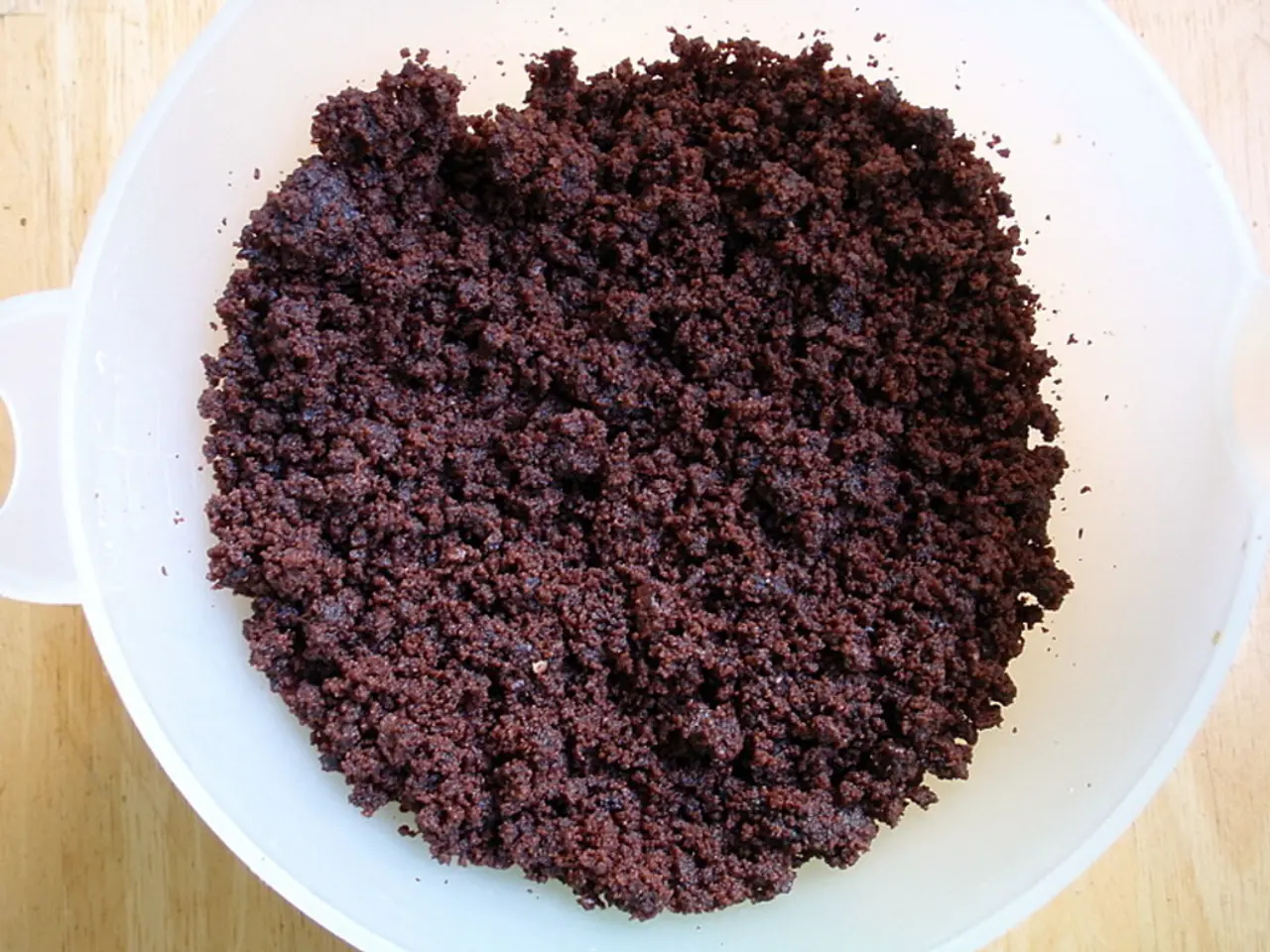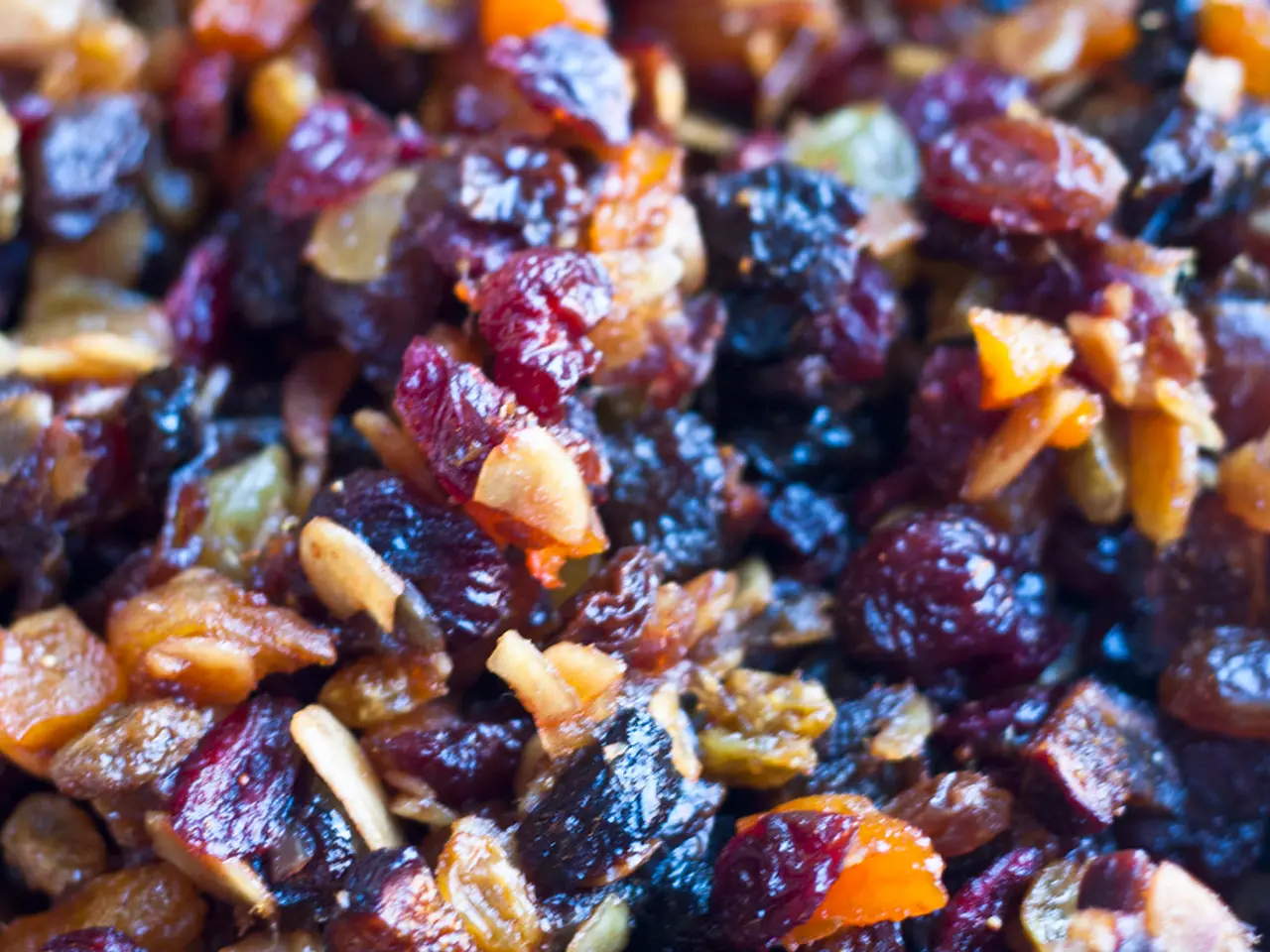Connection between Crohn's Disease and Dietary Fiber: Unveiling the Relationship
In the realm of inflammatory bowel disease (IBD), Crohn's disease is a common form that affects approximately 1 million adults in the United States [1]. The exact cause of Crohn's disease remains unknown, but experts believe it results from an abnormal immune response [2].
When it comes to diet and nutrition, fiber plays a significant role in managing Crohn's disease symptoms. Fiber, a substance found primarily in plant foods, is divided into two main types: soluble and insoluble [3].
Soluble fibers, which dissolve in water, help slow the transit time of food through the gut [3]. Examples of high fiber foods rich in soluble fibers include beans, fleshy fruits like avocados, bananas, berries, citrus fruits, and melon, as well as grains such as oats and barley [4].
On the other hand, insoluble fibers do not dissolve in water and may aggravate symptoms in people with Crohn's disease [5]. High fiber foods under this category include grains and seeds like chia seeds, flaxseed, and sunflower seeds, as well as vegetables like potatoes, sweet potatoes, squash, broccoli, and carrots, and beans such as black beans, chickpeas, and edamame [4].
For individuals with Crohn's disease, dietary fiber recommendations vary significantly between flare periods and remission phases. During a flare, a low-fiber diet is generally recommended to minimize irritation, as high-fiber foods can be difficult to digest and may trigger symptoms like abdominal pain, diarrhea, and bloating [5].
In contrast, during remission, higher fiber intake, especially from soluble fiber sources, can be beneficial. A semi-vegetarian diet naturally high in fiber has been associated with prolonged remission, suggesting that fiber helps maintain gut health and reduces flare-ups over time [1][3][5]. However, fiber should be introduced gradually and individualized, as tolerance varies among patients.
In summary, during a flare, a low-fiber diet focused on easily digestible, refined, and cooked foods with reduced fiber content is recommended. During remission, a gradual increase in soluble fiber-rich foods is advisable to support gut microbiome health and maintain remission, avoiding only those fiber types or foods that personally trigger symptoms.
It's essential to remember that personalized dietary management is crucial, and guidance from a healthcare provider or dietitian specialized in inflammatory bowel disease is recommended [1][4][5].
Recent research also suggests that dietary fiber can be beneficial and well-tolerated by those with IBD in remission [6]. However, more research is necessary to understand how fiber can help those with active symptoms and digestive discomfort.
Keeping a food journal or diary and tracking symptoms can help people determine which foods are causing problems, allowing for a more tailored approach to managing Crohn's disease.
A 2023 systematic review and meta-analysis recommends fiber for all people with IBD, as long as they do not have intestinal stenosis [7]. This information can be useful when a person wishes to discuss their treatment options with a doctor or dietitian.
[1] https://www.ncbi.nlm.nih.gov/pmc/articles/PMC6133067/ [2] https://www.niddk.nih.gov/health-information/digestive-diseases/crohns-disease/definition-facts [3] https://www.ncbi.nlm.nih.gov/books/NBK224169/ [4] https://www.ncbi.nlm.nih.gov/pmc/articles/PMC4502030/ [5] https://www.ncbi.nlm.nih.gov/pmc/articles/PMC5647730/ [6] https://www.ncbi.nlm.nih.gov/pmc/articles/PMC8130741/ [7] https://www.ncbi.nlm.nih.gov/pmc/articles/PMC9190206/
- A naive approach to managing Crohn's diseases might overlook the established role of fiber in controlling its symptoms.
- Eating foods rich in soluble fiber can be beneficial for individuals with Crohn's disease during remission periods, aiding in maintaining gut health and reducing flare-ups over time.
- Treaters of Crohn's disease should consider introducing fiber, especially from soluble sources, into patients' diets during remission, but only after consulting with healthcare professionals about individual tolerances.
- Persons with Crohn's disease should be cautious about consuming insoluble fibers, as they may exacerbate symptoms during flare-ups.
- Healthy eating, coupled with proper fiber intake, plays a crucial role in managing chronic diseases like Crohn's, particularly during remission.
- Vitamins and anti-aging benefits are not the only reasons to focus on food and food benefits; fiber intake is essential for those with digestive health conditions like Crohn's and Irritable Bowel Syndrome.
- Medical-conditions such as Crohn's disease require personalized dietary management, and it's crucial to consult with a healthcare provider or dietitian specializing in digestive health and chronic diseases.
- Keeping a food journal or diary can help identify treaters that may trigger symptoms, allowing for a more specific approach to managing Crohn's disease.
- Science continues to investigate the role of fiber in treating inflammatory bowel diseases, offering hope for those with active symptoms and digestive discomfort.





